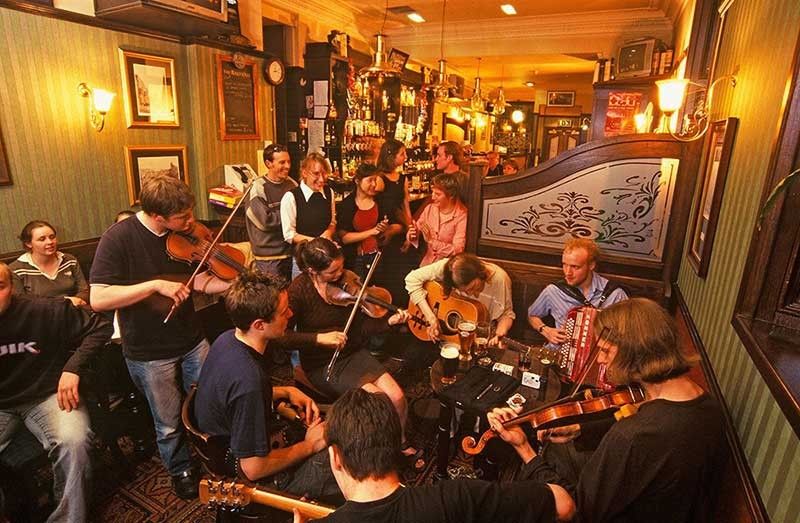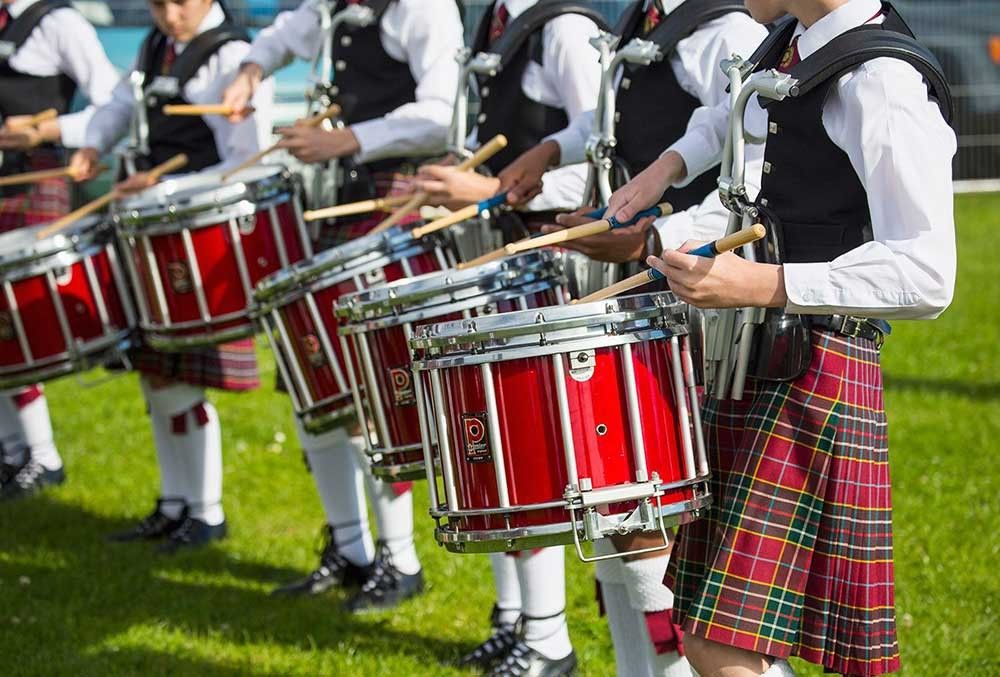
The history of Celtic music goes back thousands of years, it is a music style rich in history. However, the genre has been subject to an impressive revival in modern times. Evidence can be found in places like Festival Interceltique de Lorient, which is one of a large number of festivals that take place across the Celtic regions. Lorient is joined by festivals like Celtic Connections and HebCelt here in Scotland, as well as others throughout Ireland, Spain, Isle of Man, Portugal and even Canada.
Celtic music also has a strong presence outside of these dedicated festivals. Many Celtic acts can be found at traditional music festivals like Rudolstadt Roots Folk Weltmusik Festival, where Celtic music mixes with other traditional music styles from around the world. As well as this, more high profile acts such as Capercaillie and Runrig have achieved massive success in the mainstream music industry. This shows just how universal Celtic music is, captivating the ears and hearts of such a broad range of music fans.
Much of this is down to the unique sound of traditional Celtic musical instruments. Whether it’s the airy rasp of the wooden flute or the high-pitched skirl of the bagpipes, Celtic music is best known by its instruments. However, though everyone is familiar with the sound of an instrument like the bagpipes, you may not know that there are actually several different kinds.
Amazingly, Some Celtic regions have individual national versions adapted to suit their own unique sound. For example, the Scottish highland pipes are the loudest, and most commonly played in large pipe bands. However, In Ireland, the quieter uilleann pipes are more popular, in Brittany they favour the binou and in the Spanish Celtic regions of Asturias and Galicia, the local bagpipe is the gaita!
Activities for beginners and experts

Image by VisitScotland / Kenny Lam, all rights reserved
Thankfully, if you’ve ever wanted to tell your Bodhrán from your Bombarde, there is a range of great ways to learn to play Celtic instruments. Fèis Rois is one example of this and over time has become renowned for being a teaching festival. The festival welcomes beginners and experts alike and celebrates the music and song culture connected with the Gaelic language. Over the course of the last 30 years, it has continued to grow and welcome more new musicians. As a result, the work of Fèis Rois now takes place year-round, with an extensive programme of music tuition in Local Authorities across Scotland.
Fèis Rois now has three dedicated festivals covering different age ranges and skill levels:
Fèis Rois Oigridh, also known as ‘The Junior Fèis’ covers the youngest age group, focusing on children between the ages of 9 and 12. In the lively five-day event, children choose three different classes to take part in each day which are led by tutors who are experienced, professional musicians, skilled in working with young people.
Fèis Rois nan Deugairean or, ‘The Senior Fèis’, focuses on high school students between the ages of 12 and 18. The event is based in Ullapool with participants using the week-long event to learn new skills and gain confidence. Emphasis is placed on group work, with everyone coming together to perform at one of the highlights of the entire Fèis Rois calendar, the Autumn Residential.
Fèis Rois Inbhich is ‘The Adult Fèis’, which offers a range of classes from absolute beginner to the most advanced of musicians. Described by many previous participants as ‘the best weekend of the year’, the Adult Fèis is an annual three-day festival offering first-class tuition in traditional music, song, dance, Gaelic language and culture in the beautiful setting of Ullapool.
If playing isn't your thing
If playing an instrument isn’t your thing, there are still great ways to learn more about Celtic instruments. Scotland is home to some wonderful museums and exhibitions that offer excellent opportunities to immerse yourself in the history of Celtic music.
The National Piping Centre in Glasgow offers guided tours with your very own bagpiping host. The centre also plays host to the Museum of Piping, which charts the history of the bagpipes, one of Scotland’s best known icons. The museum holds 300 years of piping heritage, including artefacts from the rich collections of National Museums of Scotland. This is the most authoritative display of its kind anywhere in the world.
The exhibition also features bagpipes from Lowland Scotland and other parts of the British Isles, as well as from mainland Europe. Additionally, it also includes displays on bagpipe manufacture and the printing of pipe music. A fascinating film on the history, culture and music of the bagpipe completes the museum’s extensive exhibition.
Music is at the heart of Scottish life, and traditional Celtic music plays an important role in this. Whether it is learning a few new tricks for the instrument you have played for years, or just picking an instrument up for the first time, there are options available to everyone musically inclined. On top of this, there are still plenty of engrossing exhibitions to please musicians and non-musicians alike.